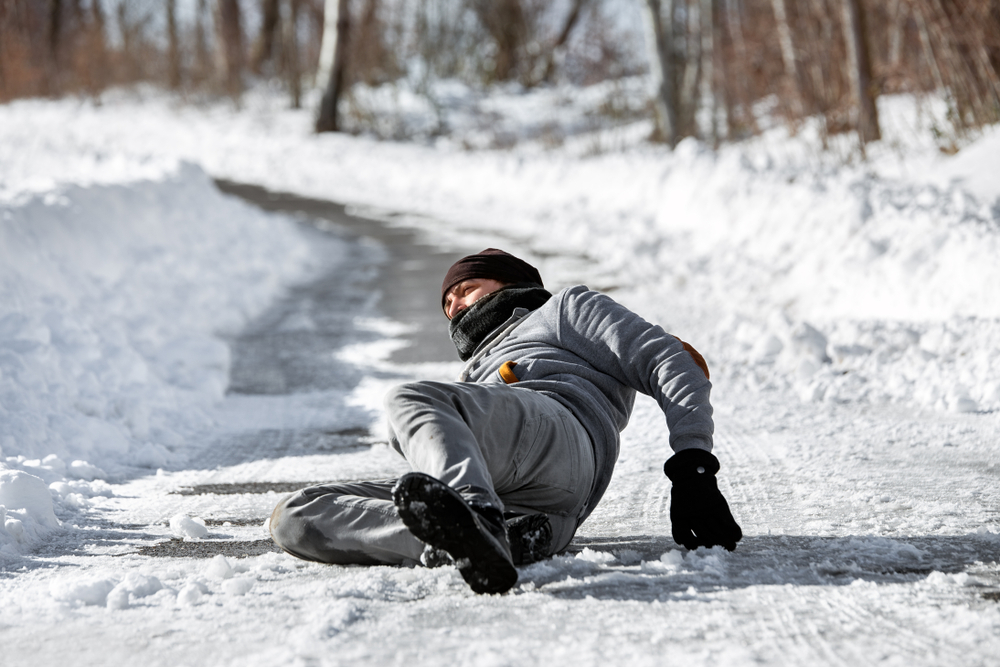I’m one of the people that loves spending time in nature regardless of the season. I find the winter months to be delightful when spending time exploring the great outdoors.
The white scenery provides a relaxing feeling, and the satisfaction of setting up a cozy shelter is hard to explain in plain words. However, winter does have its challenges, and one of the first things I had to learn is that exposure to cold can shorten my camping trips.
There’s nothing worse than being exposed to cold in a survival scenario, and it’s one of the situations that leads to serious medical problems that you should know how to deal with. The management of cold injuries should be one of your main priorities is you spend an extended amount of time outdoors during the colder months of the year. Even more, you should spend time training on how to treat such injuries if you live in a cold climate.
On the other hand, you’re probably one of the people who hate the cold and prefer enjoying their own homes’ warmth and coziness. But what if a disaster hits close to home and you are forced to evacuate your house? What if your only chance of surviving the disaster is heading for the woods?
Such a scenario will probably generate some casualties if people are unprepared. It will most definitely affect many people who will have to deal with various types of cold injuries. Since not everyone knows how to manage and treat a cold injury, this article will provide useful information to survive the cold.
How the cold can affect your body
Before moving forward with cold injury management and treatment, we should first examine how cold can affect the human body. One of the first results of exposure to cold is the increased caloric energy requirements of your body. Your physique will need more food to be able to sustain a proper temperature balance within your body.
I’ve mentioned this in a previous article, but here it goes again. The lack of a proper nutrition intake during cold weather will deplete your body core of balanced heat, and it will leave room for hypothermia to settle in.
Just like food, your body will also require water since the kidneys will still need to eliminate waste from your system. Your kidneys will employ more energy to eliminate dangerous bacteria from your body in the absence of water. Even if you don’t feel thirsty, you still need to hydrate your body properly.
The main thing that people associate with hypothermia and other cold injuries is the presence of cold. However, cold is not your enemy, and heat loss is the main culprit you need to keep an eye on during the winter.
Through convection and radiation, your body eliminates excess heat from your body. These are constant processes that keep an optimal body temperature. They can even pose a real problem during the cold weather since they can release more heat than your body can produce.
The main areas that expel heat from your body are the head and the extremities (hands and feet). Even though respiration, you will expel heat and breathe in cold air. Protecting your head and extremities and wearing a facemask that helps warm the frigid air become a must in cold conditions.
There are all sorts of clothes and accessories available on the market nowadays, designed and manufactured with the sole purpose of protecting the human body during freezing weather. You can pick whatever suits you for an extending outing in the wilderness.
What if you fall in the water during the winter season?
Total immersion in cold water is not that common during the cold season, but accidents do happen, and people end up falling through ice, getting completely submerged in lakes or streams. This is one of the significant wilderness accidents that allow hypothermia to develop in a matter of minutes.
It is recommended to avoid crossing ice-covered water bodies since you can’t estimate how thick the ice you’re stepping on.
In case you fell through the ice, one of the things to know is how to get yourself out of the water. Using a knife is perhaps the simplest method, and you need to drive it through the solid ice to roll yourself out of the icy water and move away slowly to safety.
Some people will panic since the ice will break, but you might have to break away the thin ice until you reach stable enough ice that can hold your bodyweight. Keep your calm and move forward to stronger surfaces.
When the ice breaks, you can be lucky enough to get just your feet wet or get entirely drenched.
In the first case, you will need to dry your footwear and replace your socks (or dry the ones you were wearing), and there’ shouldn’t be any significant problems.
In the second case, things get more complicated. You have to prevent too much body heat loss, and one of the first things you need to do is find absorbent snow nearby and roll over in it. This will create temporary protection until you can reach your shelter and build a fire.
Once you reach your shelter, remove the wet clothing and replace it with anything available and dry. Make enough warmth to keep a comfortable temperature and drink a hot beverage.
Focusing on cold injuries management
Extended exposure to cold can result in various developing injuries. In general, they are classified by the degree of damage, just like burn injuries are. Some people know them only as freeze burns or by their popular name (chilblains, frostbite, etc.).
First degree cold injuries
Also known as chilblains, these first-degree injuries result from cold exposure of the skin for an extended amount of time (several hours in some instances) to a temperature between 32- and 60-degrees F.
In some parts of the world, these injuries are associated with high humidity (>60%). I often experienced chilblains when I lived in the UK for six months. The damp and cold weather was always creating the conditions for first-degree injuries during my camping trips.
The symptoms of chilblains are:
- the affected area will get red at first, and swelling will soon follow
- burning dermatitis causing pain and itching will develop
- at the early stage, you will experience a slight tingling in the exposed areas. Still, as the period of exposure to cold increases and dermatitis occurs, a deep and irritating itching sensation will be experienced.
Second degree cold injuries
These injuries occur when your hands, but most commonly, when your feet are immersed in cold water for ten or more hours. This is a condition also known as trench foot, and you’ve probably heard about it. However, these are two distinct injuries, even though the immersion can lead to trench foot.
The symptoms of immersion are:
- swelling of the hands and feet will occur the longer these body parts are exposed to cold water
- the skin will change color, and a bluish discoloration will appear
- numbness will occur in the affected body parts and, the blisters and itching will become present
- pain can be felt, and sometimes neuromuscular changes will occur
The symptoms of trench foot are:
- the first sign of trench foot is blanching of the skin followed by a tingling sensation
- feet and legs will start to swell, and the skin can become dusky red or the same bluish discoloration as in the case of immersion occurs
- the developing blisters are much more intense, and they create a dreadful burning pain
- numbness occur as the pain increases, and in severe injuries, neuromuscular changes occur
Third-degree cold injuries
Known by their popular name, frostbites, such injuries occur when your body is exposed to cold and dry air for extended periods. Some people may experience it just after one hour of exposure, while some require several hours of exposure to develop frostbite.
The symptoms of frostbite are:
- a burning pain starts to develop, and a stinging is felt in the affected area; numbness occurs after extended exposure
- if ice crystals start developing in the skin, a waxy appearance of the skin or gray color will be noticeable
- limited mobility of the affected area will sometimes be felt
- the occurring swelling and blisters are very painful, and administrating pain relief medication may be required
- the tissue starts to die, resulting in gangrene.
- sometimes, the destroyed tissue will be removed from the affected parts by accident
Fourth degree cold injuries
In icy environments, there are injuries classified only as freezing or frozen tissue. They can occur immediately and will gradually extend to nearby tissue.
One example is the exposure of fingers and toes in the arctic region. The freezing can occur immediately, and it will begin to spread to the corresponding limbs. The good news is that these injuries are not so common, and during our lifetimes, we may never have to deal with a freezing person.
The symptoms of freezing are:
- ice crystals start to form almost immediately, and the entire thickness of the skin is affected down to the bone.
- the skin will turn waxy and will develop a yellowish color
- blisters will occur just like in the other cases of cold injuries, but the pain will be much more intense, almost unbearable
- loss of motion occurs relatively fast, and the skin may crack over bony prominences
- gangrene is inevitable.
Treatment and procedures
Before professional medical aid is provided, specific field treatments should be applied. One of the first things you need to do is remove the victim from the cold environment and shelter the patient in a dry, warm, and windproof location.
Once you manage to cover the shelter requirements do the following:
- Warm the affected areas or the patients’ entire body by using warm water (either by immersion or with the help of wet compresses). This should only be done if you are confident that the victim will not suffer additional injuries. If you cannot assure a warm shelter, the affected thawed areas’ refreezing will only promote tissue death. Postpone this process until the shelter is properly warmed.
- Do the warming process with water between 100- and 110- degrees F. Avoid temperature drops by regularly checking the water using a thermometer.
- After warming the patient, you need to let the body be exposed to warm air (70 degrees F is recommended). Be aware that in some instances, the skin may turn red and become painful.
- Depending on the cold injury degree, you may need to administrate pain killers to make the patient feel comfortable. If you don’t have any available, even administrating aspirin will do some good since it will prevent blood sludging.
- The patient needs to drink as many warm drinks as possible. Not only will it heat the core, but it also helps the kidneys process cold waste.
- In cases of serious cold injuries, the skin will break and leave room for infection. Use a topical antibiotic to prevent infections. Even applying honey on the broken skin will help.
- If the infection is already present, you need to administer powerful antibiotics to prevent its spread. Clean the wounds regularly with warm water if nothing else is available.
- In some instances, the patient needs to be continuously monitored for up to a week. Seek professional medical aid to determine or evaluate any coexistent illness.
When treating cold injuries, one needs to make a clear distinction between myths and actual medical procedures. Avoid doing the following even if such procedures or remedies were associated with cold injuries back in the day.
Do not:
- Rub a cold injury. Some myths say that rubbing the affected areas with snow or cold water may help heal them. Remember that friction of any kind is dangerous when dealing with a cold injury, and it can destroy skin tissue or worse.
- Never empty the contents of blisters since this will only allow the affected areas to get infected. This often occurs when in the field and inexperienced people pop the blisters thinking they will heal faster.
- The forced use of the affected body part should be avoided, and do not bear weight unless it is necessary to your survival.
- Do not use stimulants like tobacco or coffee since the short-term benefits are only psychological, and in return, they will seriously affect your blood vessels.
- There is a myth that says using corticosteroids or vasodilators will help heal a cold injury. However, medical research showed mixed results, and they are practical of no use when treating cold injuries.
- Under no circumstance should you perform surgery on the affected area “to save the remaining limb.” In most cases, the loss of tissue is superficial, and the entire thickness of the injury may not be affected. This is a procedure that only medical professionals should establish if the gangrene has claimed the affected body part.
Concluding
The management and treatment of cold-related injuries should be conducted only by people that know what they are doing. Be able to identify the type and gravity of the cold injury before you put into practice a specific treatment. Also, to save a victim from cold exposure, you should know how to recognize facts from fiction. Many survival myths out there can do more harm than good when dealing with a cold injury.
Even if the information listed in this article should be common knowledge for outdoor lovers and those living in cold climates, when you find yourself in doubt, it’s better to seek professional medical help as soon as possible.
























































































